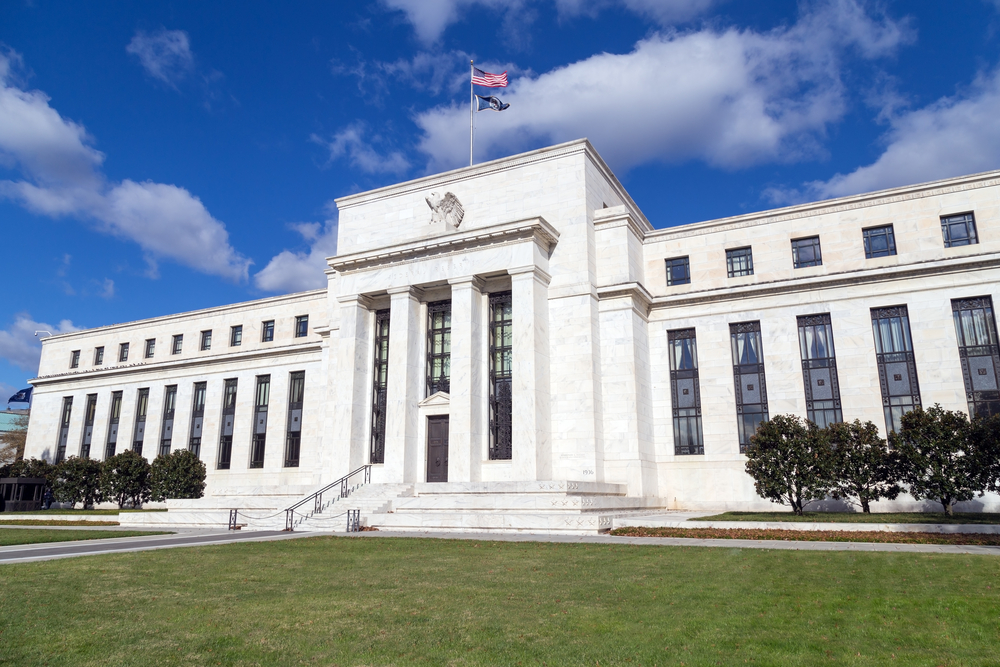Reconciling the Fed’s Large Change in Forward Guidance

Please note that we are not authorised to provide any investment advice. The content on this page is for information purposes only.
If there was one word Yellen emphasized yesterday it was caution. The dot plot reflected that as well. Can one ask if the Fed is being too cautious?
Yellen acknowledged that the Fed’s assessment of the US economy had not changed much from December. There is little reason it should. However, it is difficult to reconcile that with the substantial change in the forward guidance, and the halving of the rates hikes that are deemed appropriate this year.
If there was one word Yellen emphasized yesterday it was caution. The dot plot reflected that as well. Can one ask if the Fed is being too cautious?
Yellen acknowledged that the Fed’s assessment of the US economy had not changed much from December. There is little reason it should. However, it is difficult to reconcile that with the substantial change in the forward guidance, and the halving of the rates hikes that are deemed appropriate this year.
The US labor market continues to heal. It is not just that the jobs creation remains strong and that the unemployment rate is below 5%, but the underemployment measure (U-6) made new cyclical low last month at 9.7%. The four-week moving average of weekly jobless claims stands at 268k. In this cycle, it has rarely been lower.
The labor market is critical for the Fed’s leadership. It is not only a mandate, but it is the key to the Fed’s leadership understanding of inflation. Headline inflation moves to core and core is driven by wages.
Core price pressures have risen. Despite the dollar’s rise, which in broad trade-weighted terms peaked in mid-January, and the drop in energy prices, core CPI, and the core PCE deflator rose steadily last year. Yesterday, February CPI was released. The core measure rose 2.3% year-over-year. That is its fastest pace in nearly four years. The core PCE deflator lags behind the core CPI due to methodological and composition reasons. However, it was at 1.7% in January. This is just above the 2014 peak at which time the Fed cautioned that inflation bump was transitory (which it was as the core PCE slipped back toward 1.2% in the middle of last year.
Inflation expectations have also risen markedly. The five-year breakeven rose from about 95 bp on February 9 to 1.51% today, which is the highest since last July. The 10-year breakeven has risen from 1.2% on February 10 to 1.63% today, a new four-month high.
Some have argued that the dollar’s strength is steadying the Fed’s hand. However, the Federal Reserve’s broad trade-weighted dollar has eased 3.8% since January 20. Today it is below levels that prevailed when the Fed hiked in December.
Many investors and journalists were worried about the US slipping into a recession. However, Q4 15 growth was revised up, and Q1 16 growth is returning to the post-crisis trend pace near 2%. Moreover, the evidence is beginning to accumulate to suggest that the oil and inventory headwinds on the US economy may be dissipating. March Empire State survey and today’s Philly Fed survey were stronger than expected, including the forward-looking new orders components. This suggests upside potential to the next manufacturing ISM/PMI.
A combination of temporal inconsistencies, like playing down market-based measures of inflation and then citing them, or saying that the economic assessment has not changed much and cutting the number of hikes anticipated to 2 from 4, raises questions about the Fed’s credibility. Fed officials, who are well aware of market developments, are cognizant of these concerns.
We are concerned that the Federal Reserve over-corrected its December excesses. We are concerned that the market has overreacted to what had generally been anticipated. including the more to two hikes. While investors see the mote in officials who change their forecasts and forward guidance, they are less aware of the beam of their own shifts.
At the end of last year, the December 2016 Fed funds futures contract priced in more than two hikes this year. On 30, December 2015, the December 2016 Fed funds futures implied 90 bp yields. On 11 February, it had fallen to 34.5 bp. It now is 60.5 bp. Are market guesses and forecasts more credible than the Fed? It may depend on when the question is answered.
Many participants are frustrated. The BOJ, ECB, and today, Norway’s central bank, eased policy, and their respective currencies have rallied. The media often portrays this some kind of new development, which it also says, raises questions about the credibility of central banks. Balderdash. Markets are not only incredible aggregators of information but are also a large discounting mechanism. Often the dollar, for example, would sell-off on anticipation of QE and rally on the fact.
Norges Bank’s rate cut today was widely anticipated. The ECB move was widely anticipated. The BOJ’s move at the end of January was a notable surprise. A few days earlier, Kuroda had seemed to rule out negative interest rates. However, we suggest that the negative rate surprise fanned the anxiety that had been driving markets since the start of the year. It spurred the unwinding short yen hedges and the buying back of the yen that was used to fund the purchase of risk assets.
As is well appreciated, monetary policy impacts with a lag. The Fed’s leadership has cautioned that delaying rate hikes too much could spur more aggressive moves later. This has not changed. Although the pricing of the Fed funds futures and discussions with market participants do not agree (yet), we continue to think a June rate hike remains the most likely scenario.
When Doves Cry: Imprudently Cautious is republished with permission from Marc to Market




